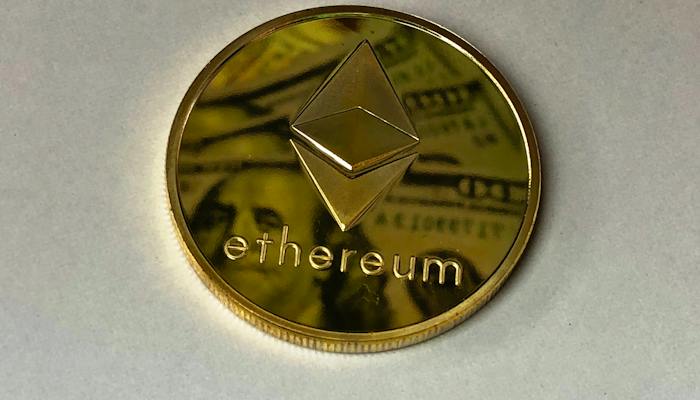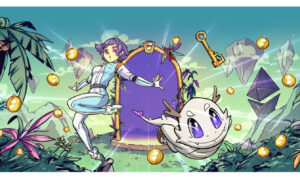Introduction
Non-fungible tokens, or NFTs, have completely revolutionized the digital space. The way we think about ownership and value in the digital world has changed as a result of NFTs, whether it be in the context of music, art, sports memorabilia, or video game things. In this essay, we’ll examine how Ethereum, one of the most well-known blockchain platforms, contributed to the development of NFTs and how that affected the realm of digital art. Try Instant Edge Ai if you’re just getting started with investment! It’s a fantastic online platform that allows for a smooth experience.
Introduction to NFTs
What are NFTs?
NFTs are unique digital assets that are stored on a blockchain. Unlike cryptocurrencies such as Bitcoin, NFTs cannot be exchanged for one another, as each NFT is one-of-a-kind and has its own unique value.
How do NFTs work?
NFTs are created using blockchain technology, which allows for the creation of digital assets that are immutable and verifiable. NFTs are created using smart contracts, which are self-executing contracts with the terms of the agreement between buyer and seller being directly written into lines of code.
The Rise of NFTs
The rise of NFTs has been fueled by several factors, including the growing interest in digital art and the increasing mainstream acceptance of blockchain technology. In recent years, we have seen a surge in interest in digital art, and NFTs provide a way to authenticate and monetize these works in a way that was previously impossible.
- How NFTs are Redefining the Value of Digital Art
- The Pivotal Role of NFTs in the Cryptocurrency Ecosystem: Unveiling Their Impact Beyond Digital Art
Ethereum and NFTs
What is Ethereum?
Ethereum is a blockchain platform that was created in 2015 by Vitalik Buterin. It is an open-source, decentralized platform that allows developers to create decentralized applications (dApps) on top of it.
How does Ethereum work with NFTs?
An NFT is essentially a smart contract when it is formed on Ethereum. It has a distinctive identifier and a set of rules that specify how it can be used or transferred. This smart contract is accessible to the whole public and verifiable because it is kept on the Ethereum blockchain. An NFT can be generated and then purchased, sold, or traded on any of the marketplaces that accept Ethereum-based tokens.
Utilizing the Ethereum Virtual Machine (EVM) is one benefit of using Ethereum for NFTs. The Ethereum Virtual Machine (EVM) is a runtime environment that enables programmers to create Ethereum smart contracts in a number of different programming languages, including Solidity, which is the most popular language for such contracts.
The Future of NFTs and Ethereum
The potential for NFTs and Ethereum in the future is exciting. In the years to future, we may anticipate seeing even more cutting-edge applications for NFTs as blockchain technology develops and expands in popularity. NFTs can fundamentally alter how we perceive ownership and value in the digital sphere, and Ethereum will likely be a key player in this change.
To sum up, NFTs are a fresh and intriguing development in the field of digital art, and Ethereum is leading the charge. NFTs give artists a new option to monetise their creations and give collectors a means to invest in one-of-a-kind and unique assets thanks to the capacity to develop and exchange unique digital goods.
NFTs and the Digital Art World
Authenticity and Ownership
One of the main benefits of NFTs for digital artists is the ability to authenticate and verify ownership of their works. This is especially important in the digital art world, where it can be difficult to prove ownership and authenticity.
Monetization
NFTs also provide a way for digital artists to monetize their works in a way that was previously impossible. By creating and selling NFTs, artists can receive a percentage of the sale price every time their work is resold, allowing them to benefit from the increasing value of their work over time.
Challenges and Controversies
Despite the benefits of NFTs, there are also challenges and controversies surrounding their use in the digital art world. One of the main criticisms is that NFTs contribute to the growing energy consumption of blockchain technology, which has raised concerns about its environmental impact.
Conclusion
NFTs have transformed the way we think about ownership and value in the digital world, and Ethereum has played a significant role in their rise. While there are challenges and controversies surrounding their use, NFTs have provided a way for digital artists to authenticate, monetize, and preserve their works for generations to come.
Disclaimer: This is promotional marketing content. The presented material by no means represents any financial advice or promotion. Be sure to do your research and acknowledge the possible risks before using the service of any trading platform.



































